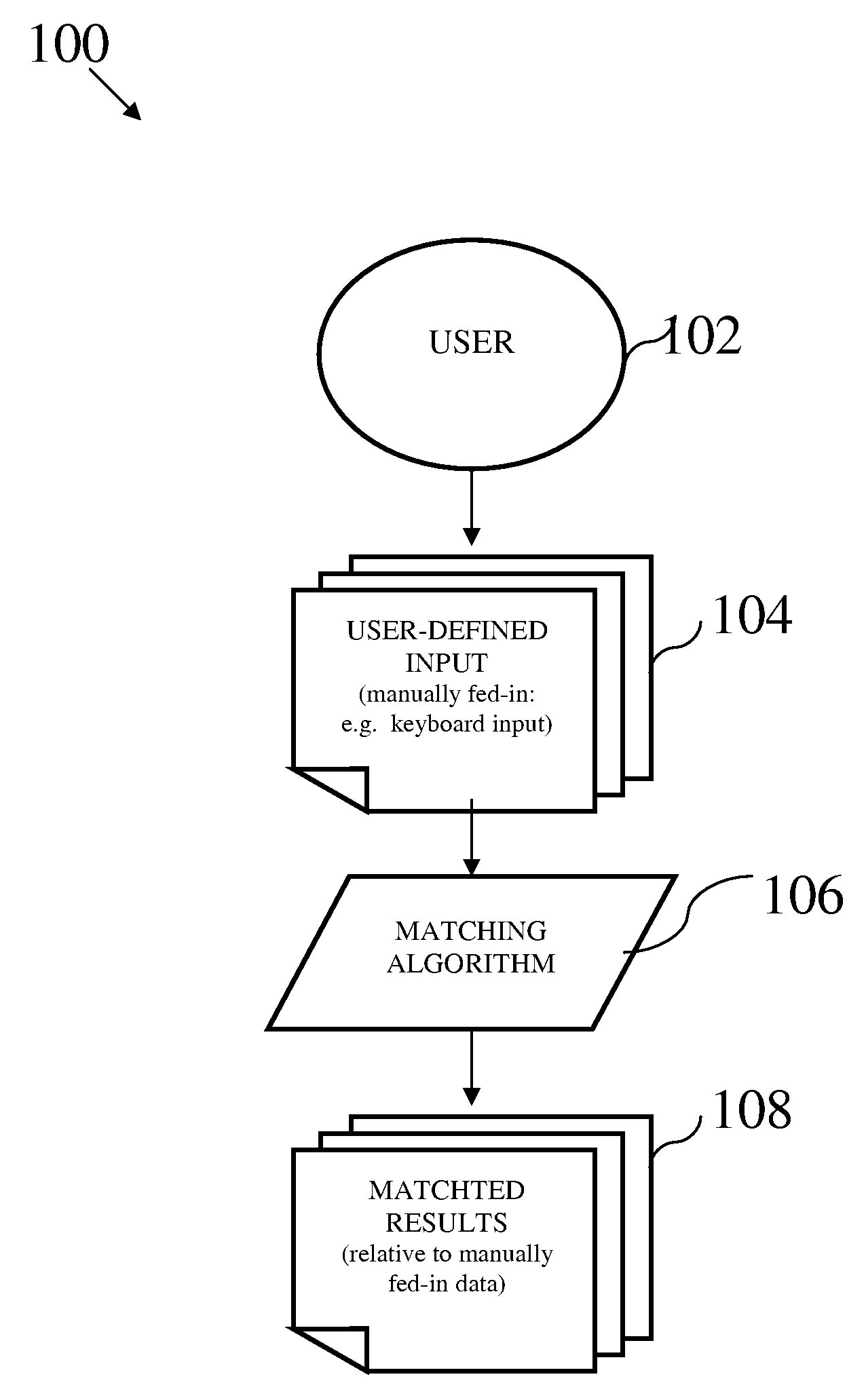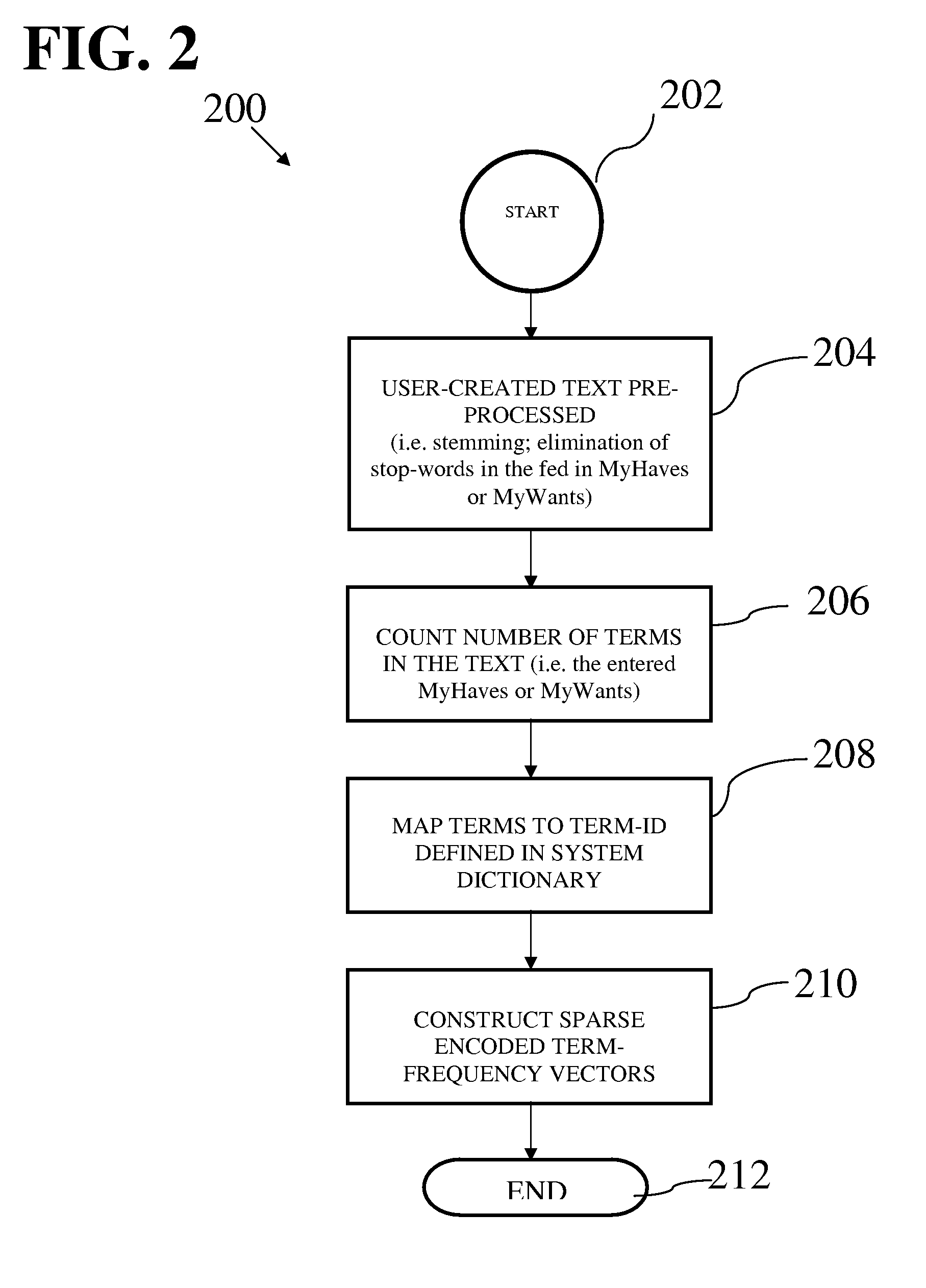Method and system for matching user-generated text content
- Summary
- Abstract
- Description
- Claims
- Application Information
AI Technical Summary
Benefits of technology
Problems solved by technology
Method used
Image
Examples
Embodiment Construction
[0016]Detailed description herein of the present invention is expressed in stepwise fashion describing the invention holistically.
[0017]The present invention provides a method and system for matching user-generated text content in a database. It is necessary for the detailed description herein to be preceded by a brief definition of terms. As used herein, the term “user-generated” is synonymous with “user-defined”, both of which describe information or data content freely supplied by a user by means of an input device; in this case, a computer keyboard. As used herein, the term “pre-defined” describes the quality that makes certain types content unalterable because they are provided as options by the system rather than by the user. Herein, the term “hard-coded” often means the same thing as “predefined”. As used herein, the term “drop-down menu” refers to a system-provided list of predefined options from which a user must select in order to proceed to the next interface. As used her...
PUM
 Login to View More
Login to View More Abstract
Description
Claims
Application Information
 Login to View More
Login to View More - R&D
- Intellectual Property
- Life Sciences
- Materials
- Tech Scout
- Unparalleled Data Quality
- Higher Quality Content
- 60% Fewer Hallucinations
Browse by: Latest US Patents, China's latest patents, Technical Efficacy Thesaurus, Application Domain, Technology Topic, Popular Technical Reports.
© 2025 PatSnap. All rights reserved.Legal|Privacy policy|Modern Slavery Act Transparency Statement|Sitemap|About US| Contact US: help@patsnap.com



